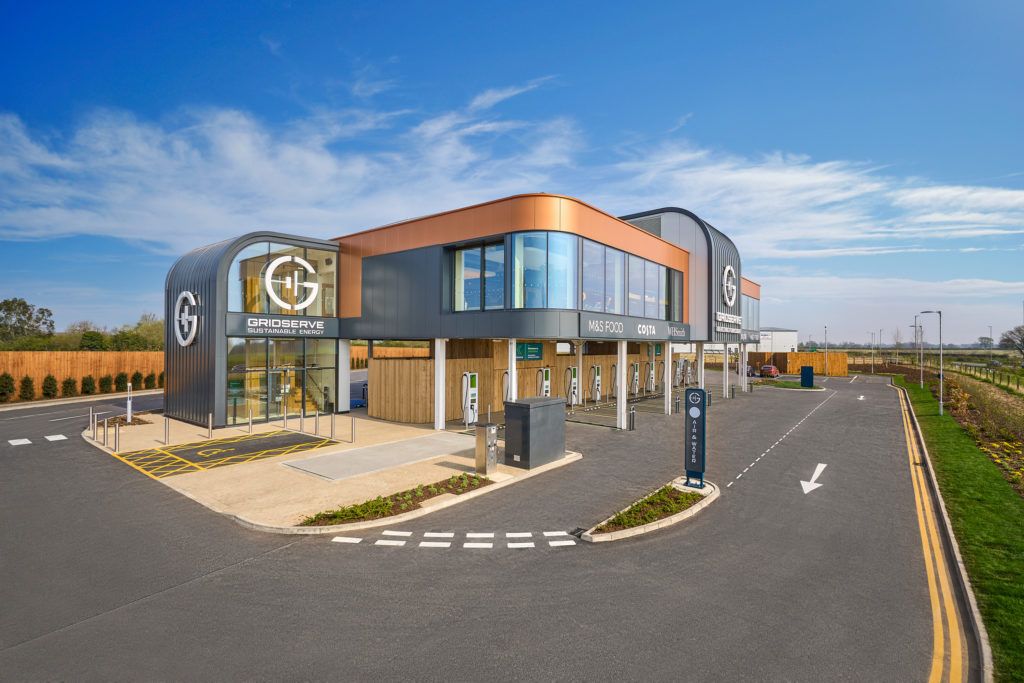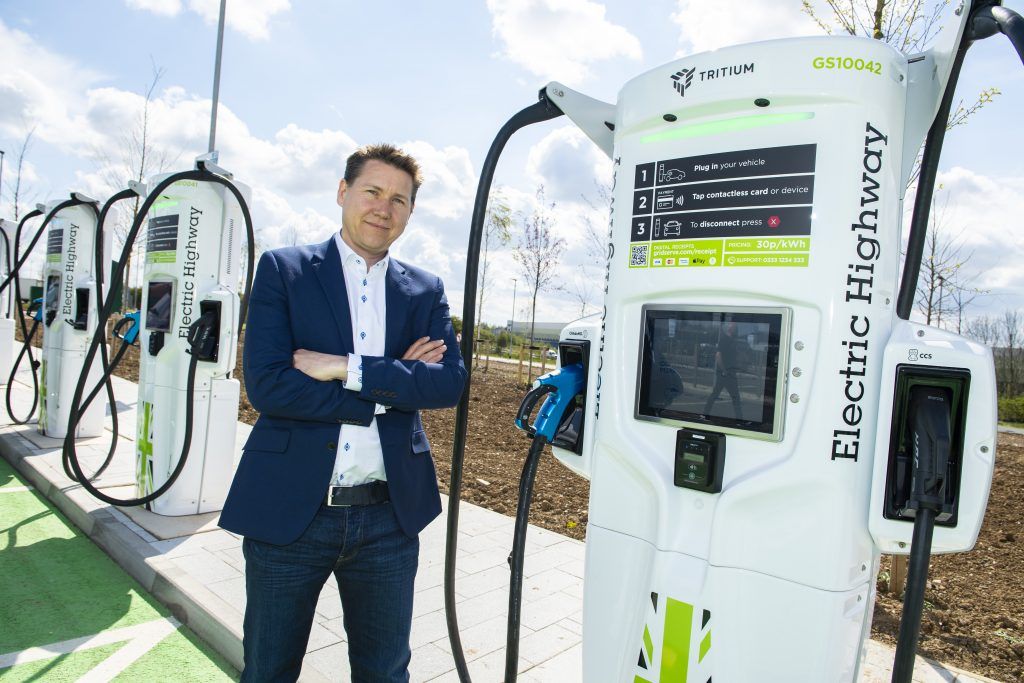Toddington Harper is a man who is focused on building a network of the right electric vehicle (EV) charging solutions for the right locations. The Chief Executive of EV infrastructure firm Gridserve spoke to Transport + Energy at the opening of the company’s latest Electric Forecourt in Norwich.
Gridserve’s new site in Norwich boasts 36 EV chargers, including 22x high-power chargers with up to 350kW of power – the fastest chargers commercially available today, capable of adding up to 100 miles of range in only five minutes.
The site forms part of Gridserve’s £1 billion UK-wide investment being rolled out into its charging infrastructure network and is designed to deliver the best possible charging experience.

But why Norwich?
Norwich and the wider East of England region currently have comparatively low EV charger coverage compared to other regions in the UK – hosting just 29 chargers per 100,000 people compared to the UK average of 42 per 100,000 people, or 102 per 100,000 people in London. The result is that currently EVs only account for a small proportion of cars on the road in the Norwich area.
“What we’re focusing on is building a network of the right charging solutions for the right locations,” remarks Harper.
He wants drivers to be able to use any type of electric car without having any range or charging anxiety and to experience a great customer experience.
“To do that, you need to have the right infrastructure in the right location. So, on the motorway network, we’re putting in electric hubs. But there are many locations like this one where it’s not suitable to put in a hub of six or 12 chargers.
“So that’s why we have built an Electric Forecourt that creates a location that’s specifically designed for EV drivers.”
With more than 100,000 people living locally to the site the Gridserve Chief Executive is expecting the site to be busy – although maybe not at first.
“There are very few EV drivers in the area. This sounds like a strange thing to hear as when you’re talking about building charging infrastructure, you would assume that you are building it for EV drivers. But we certainly see it as an opportunity to help create more EV drivers. And as part of that creation, give them an experience of infrastructure that is fantastic.”
The Norwich Electric Forecourt showcases a brand-new design, where Gridserve have been able to provide both charging and a great customer experience in a smaller footprint than at the company’s first site in Braintree. By elevating the facilities above the chargers, Gridserve have been able to make the best use of the space available.
Making things simple
Harper is also keen to make the messaging around charging much clearer and simpler for EV drivers to understand.
“You notice here, if you look at the branding, we’re not really focusing on 350 kilowatt charging, because we’ve learned that nobody really knows what that means.”
Expressions such as Electric Forecourts, Electric Super Hubs and Electric Hubs will be used to help consumers understand the type of charging facilities they are using.
“It’s a way of really trying to simplify everything as much as possible,” comments Harper. “The first generation of EV people like me will understand the difference between a kilowatt and a kilowatt hour. We’re really into the detail and want to understand things like a charging cycle, but the next generation just want to jump all this stuff.”
Harper recently spoke to someone who was charging his car and asked about their charging experience.
“I asked about the battery on his new car. And he just said, it takes about 40 minutes to charge. That’s what he knew.
“People just want a car and to get from A to B. We’re really learning and working on improving our approach for customers so that we can make it as simple as possible.”
Electric Vehicle infrastructure Strategy
The Government recently unveiled its £1.6 billion Electric Vehicle Infrastructure Strategy which includes plans to support the UK market to reach 300,000 public EV charge points by 2030. A £450 million Local Electric Vehicle Infrastructure [LEVI] Fund will see local authorities able to bid for funding to help accelerate the rollout of EV hubs and on-street charging whilst the existing £950m Rapid Charging Fund will support the rollout of at least 6,000 high powered super-fast chargepoints across England’s motorways by 2035.
Harper broadly welcomes the strategy but questions the figure of 300,000 charge points by 2030.
“I’m incredibly supportive of the government because I know first-hand how much they’re enabling what we do. I’m not sure the target should be 300,000 chargers. It seems a bit bizarre. I think it’s about having the right chargers in the right location to match the power needs and the charge needs of those locations. And it’s very difficult to turn that into an overall number of how many chargers we need. It seems like a very big number.”
Harper believes there could be unintended consequences if too much focus is put on the number of chargers that need to be installed.
So what drives the man in charge of Gridserve to keep doing what he is doing?
“Sustainability is something I’ve always done,” he remarks.
Throughout his education Harper was taught about fossil fuels and from an early age he questioned why they were being used so extensively.
“Why would you want to use them when you can power the world from solar and wind, which is available?
“Then when I learned about all the damage fossil fuels cause the world, I just found it incredibly bizarre. And I did a lot of work over many years, I carried out projects with the United Nations many years ago prior to doing any of this stuff. It is incredibly important. The calls to action just get louder and louder. And we’re at the point now where they’re desperate.
“This decade is crucial for climate action and it’s vital that we deliver the solutions that will move the needle on climate change. The widespread transition to electric vehicles, powered by sustainable energy, is a key part of what’s needed. Giving drivers the confidence to switch to an electric vehicle and enabling a widespread transition away from fossil fuel vehicles is a central aim of our Electric Forecourts.”
Images: Gridserve















